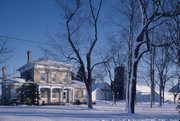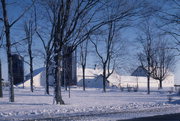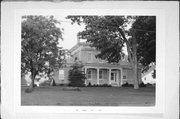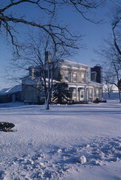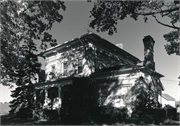| Additional Information: | A 'site file' exists for this property. It contains additional information such as correspondence, newspaper clippings, or historical information. It is a public record and may be viewed in person at the Wisconsin Historical Society, State Historic Preservation Office.
Few people played a more important role in the rise of Wisconsin’s famous dairy industry than William Dempster Hoard. He served as the governor of Wisconsin for one term (1889-1891), but he made his greatest contribution as a developer and promoter of scientific dairying. In the early 1870s, he was instrumental in founding the Wisconsin Dairyman’s Association, and in 1885, he began publishing Hoard's Dairyman, which became one of the nation's foremost agricultural journals. Through its pages, he vigorously promoted modern practices: the cultivation of alfalfa for cattle feed, the construction of silos to preserve hay and other feed crops from weather damage, and the eradication of milk-borne tuberculosis. Hoard’s most active years--1870s-1910s--were also the years of greatest expansion for Wisconsin’s dairy industry. His legacy lives on in his journal and in Wisconsin’s status as “America’s Dairyland,” a reputation he did much to create. It also lives on in this farm, where Hoard tested many of his ideas and where major innovations in scientific dairying continue to be developed.
Hoard acquired the property, then called Prospect Farm, in 1899. The farmhouse, where the resident manager lived (Hoard himself lived in Fort Atkinson), is a symmetrical Italianate structure originally built in 1845. One-story wings flank the two-story core, and a two-story kitchen wing with an attached one-and-one-half-story summer kitchen extends to the back. Hoard replaced the original flat roofs and parapets with low-pitched hipped roofs. These have wide-overhanging eaves supported by paired brackets, in keeping with the original Italianate style. The brick dentil courses running just below the brackets mark the houses’s original cornice line. Hoard also added a one-story veranda across the house’s central block, as well as small porches along the rear, ornamented by Queen Anne spindled friezes.
The farm continues to adapt to modern research needs, so most of its outbuildings have been added or significantly altered since Hoard's death, but the dairy barn’s broad gabled facade retains much of its original appearance. |
|---|

